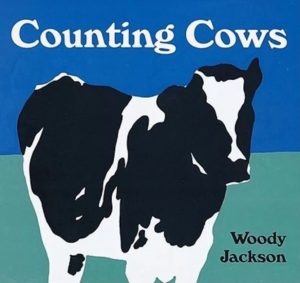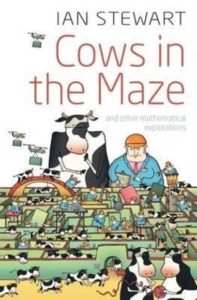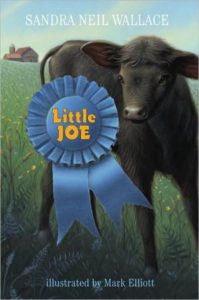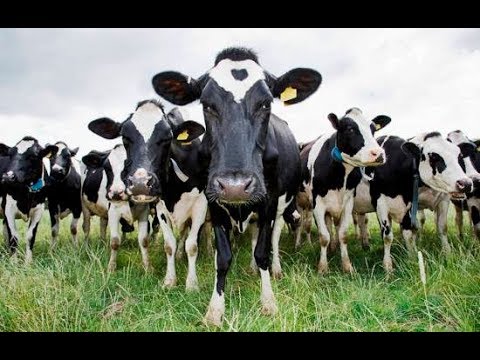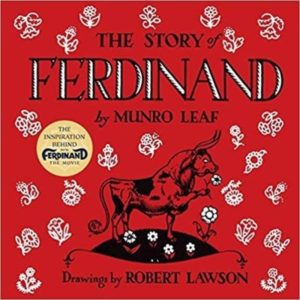
|
By Munro Leaf, The Story of Ferdinand (Viking Juvenile, 2011) is the classic tale of the peaceful bull who wanted only to sit under a cork tree, smelling the flowers. Then he’s stung by a bee just as recruiters arrive from Madrid to choose the biggest, fiercest bull for the bullfights. For ages 3-8. |
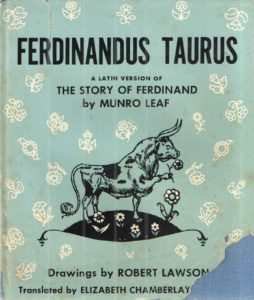
|
Ferdinand’s story is also available in Latin. Check out Ferdinandus Taurus (David R. Godine, 2000). |
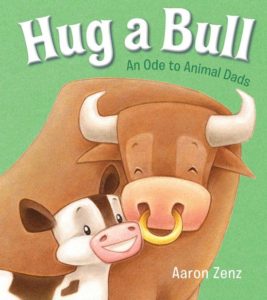
|
Aaron Zenz’s picture book Hug a Bull: An Ode to Animal Dads (Walker Children’s Books, 2013) introduces kids to the names of 27 different animal dads. (For 27 animal moms, see the companion book I Love Ewe.) For ages 3-6. |
|
|
In Sandra Neil Wallace’s Little Joe (Knopf Books for Young Readers, 2010), nine-year-old Eli is given a calf of his own to raise. (But don’t bother naming him, Eli’s father warns, because he’s just going to be eaten.) Even so, Eli names him Little Joe – and, after Joe wins the blue ribbon as best bull at the county cattle show, Eli’s grandfather buys him to save him from the butcher. It’s a great story of old-fashioned farm life, the difficulties of family relationships, and the struggles that come with growing up. For ages 9-12. |
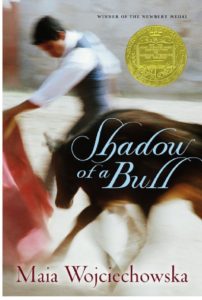
|
In Maia Wojciechowska’s Newbery-winning Shadow of a Bull (Aladdin, 2007), eleven-year-old Manolo’s father, a world-famous bullfighter, died when he was three. Everyone has always expected Manolo to follow in his father’s footsteps – but Manolo wants to pursue his own path. A wonderful story of courage and friendship. For ages 9 and up. |
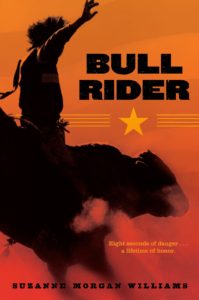
|
In Suzanne Morgan Williams’s Bull Rider (Margaret K. McElderry Books, 2010), 14-year-old Cam O’Mara isn’t much interested in the family sport of bull-riding – he’s a skateboarder – until his older brother Ben comes home from Iraq with a brain injury. If Cam can only ride the champion bull Ugly for just eight seconds, the prize money will make all the difference in the world to Ben. For ages 12 and up. |
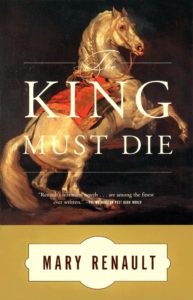
|
Mary Renault’s The King Must Die (Vintage, 1988) is an historical retelling of the story of Theseus. Here the young Theseus discovers the identity of his father and joins the fourteen young men and women sent as tribute to King Minos of Crete, where all are trained to become bull-dancers – vaulting over the horns of bulls. (Bulls! It’s not clear why this edition has a horse on the cover.) The story continues in The Bull from the Sea (Vintage, 2001). Terrific reads for older teens and adults, these are compellingly told using a wealth of research into the history, archaeology, and culture of the time. |
